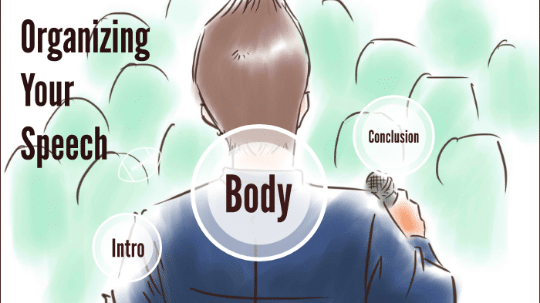Mastering public speaking is a pivotal skill that transcends various professional and personal arenas. Whether delivering a keynote address, presenting in a business meeting, or speaking at a community event, the ability to communicate effectively can significantly impact one’s influence and success. This blog post delves into essential tips and techniques to enhance public speaking skills. From understanding the audience to refining delivery and managing nervousness, the insights provided aim to equip readers with practical strategies for confident and compelling speech delivery.
Contents
Know Your Audience

Understanding the audience is crucial in crafting a speech that resonates. Before any presentation, it’s important to gather information about the audience’s demographics, such as age, profession, and cultural background. This knowledge helps in customizing the content, ensuring it is relevant and engaging. For instance, a speech to industry professionals might include technical jargon, while one for a general audience would require simpler language and more background information.
Connecting with the audience goes beyond just knowing who they are; it’s about making the content relatable and engaging. Speakers should strive to create a narrative that the audience can connect with, using stories, examples, or humor relevant to their interests and experiences. This approach not only captures the audience’s attention but also establishes a rapport, making the speech more memorable and impactful. Adapting the speech to reflect the audience’s values and interests can transform a standard presentation into an impactful experience.
Crafting Your Message

The structure of a speech is a foundational element in its effectiveness. A well-organized speech should have a clear introduction, a concise body presenting the main points, and a strong conclusion that reinforces the key message. This structure helps the audience follow the argument and retain the information. The introduction should capture attention and set the tone, the body should deliver the core message with evidence or examples, and the conclusion should summarize and call to action if applicable.
Clarity and conciseness are vital in public speaking. A clear message is easily understood and remembered. Avoiding jargon, technical terms, or complex language is essential unless the audience is familiar with such terminology. Conciseness helps in keeping the audience engaged and prevents the message from becoming diluted. The key is to convey the message with enough detail to be informative but not so much that it becomes overwhelming. Striking this balance is essential for effective communication.
Effective Use Of Visual Aids

Selecting the right visual aids can significantly enhance a presentation. Visuals, such as slides, charts, and videos, should complement and reinforce the spoken message, not overshadow it. The key is simplicity and relevance – each visual element must serve a clear purpose in illustrating or clarifying the speech’s points. Overloading slides with text or using complex graphics can distract or confuse the audience, detracting from the overall impact of the presentation.
Integrating visual aids effectively into a speech requires careful planning. They should flow seamlessly with the narrative, appearing at the right moments to add value. Speakers should familiarize themselves with the operation of visual equipment and ensure all materials are easily visible to the entire audience. It’s also crucial to be prepared for technical issues and have a backup plan in case visual aids fail. Remember, the primary focus should always remain on the speaker and their message, with visuals serving as a supportive tool.
Body Language And Vocal Delivery

Non-verbal communication, including body language, facial expressions, and gestures, plays a significant role in public speaking. Effective speakers use body language to convey confidence and engage the audience. Gestures can emphasize points and aid in the expression of emotions or ideas. Maintaining eye contact helps establish a connection with the audience, making the speech more personal and impactful.
Vocal delivery is another crucial aspect of effective public speaking. The tone, pace, volume, and use of pauses can greatly influence how the message is received. Modulating one’s voice helps maintain the audience’s interest and emphasizes key points. Speakers should practice speaking clearly and at a pace that is easy to follow, using pauses strategically to allow the audience to absorb information.
Dealing With Nervousness

Public speaking often induces nervousness, even in experienced speakers. Understanding the roots of this anxiety is the first step towards managing it. Common causes include fear of judgment, not meeting expectations, or feeling unprepared. Recognizing these fears allows speakers to address them directly through preparation and positive thinking.
Staying calm and focused during a presentation is essential. Techniques such as deep breathing, visualization, and positive self-talk can help in managing nerves. Practicing the speech multiple times before the actual presentation builds familiarity and confidence. It’s also beneficial to arrive early to get comfortable with the surroundings and perform a quick rehearsal if possible.
Engaging Your Audience

Engaging the audience makes a speech more effective and memorable. This can be achieved through various strategies, such as asking rhetorical questions, incorporating audience participation elements like polls or Q&A sessions, and relating the topic to real-life scenarios that resonate with the audience. Keeping the speech dynamic and interactive prevents monotony and maintains the audience’s attention.
Handling questions and feedback effectively is an essential skill. Speakers should welcome questions as they indicate audience engagement and provide an opportunity to clarify or expand on certain points. Being prepared to address unexpected questions calmly and confidently shows expertise and adaptability. Constructive feedback, whether during or after the speech, should be seen as an opportunity for growth and improvement in future presentations.
Practicing And Improving

The significance of rehearsal before a public speaking engagement cannot be overstated. Practice helps in refining the delivery, timing, and use of visual aids. It also enables the speaker to fine-tune their speech, ensuring that each element aligns with the overall message. Recording practice sessions can be particularly useful, as it allows the speaker to observe their performance and make necessary adjustments.
Seeking feedback and focusing on continuous improvement are vital for becoming a skilled public speaker. Feedback from peers, mentors, or audience members provides invaluable insights into areas of strength and those needing improvement. Actively seeking such feedback and being open to constructive criticism are key to evolving and refining public speaking skills.
The Bottom Line
Mastering public speaking is a journey that involves understanding the audience, crafting a clear and engaging message, and delivering it with confidence and poise. Incorporating visual aids effectively, mastering body language and vocal delivery, managing nervousness, engaging the audience, and continuously practicing and seeking feedback are integral components of this process. By applying these techniques, speakers can transform their presentations into powerful tools for communication, leaving a lasting impression on their audience.
